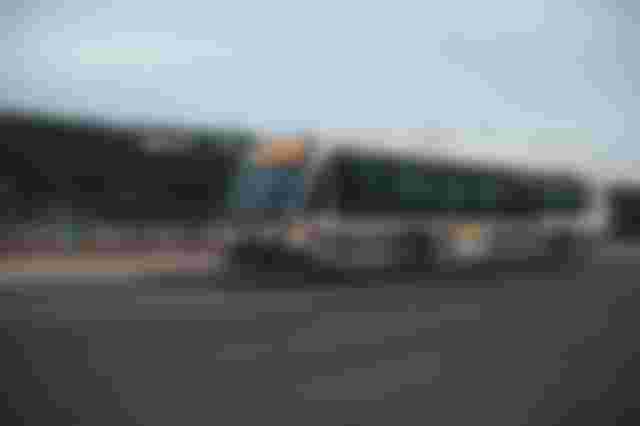City Traffic Jam That Never Stops
We are part of a society that moves actively from one place to the second. This activity is always there every day where we have different routes among other people. Those who want to learn, need time to go to school. Those who want money, need to go to the office to get a salary from the company and so on. However, not everything went smoothly as problems like congestion would be a hindrance to the people concerned. Indeed today, the culture of traffic jams has become a natural thing in big cities. However, it is quite detrimental to many parties.
Based on data from the traffic index ranking on the Tomtom website, they managed to capture congestion data on a global scale. From the data found in the 2021 case, it can be seen that the city of Istanbul has the worst traffic jams in the world today. Then in second and third place, the cities of Moscow and Kyiv followed the negative list of Istanbul cities that were above it. My country or city itself is at number 46. This is quite surprising because previously Jakarta or Indonesia entered the top 10 as the worst traffic jams in the world in 2017 (if the data that I provide is an error, you can correct it or tell me in the comments column).

I’m quite grateful and appreciate the steps taken by the government in eradicating congestion on city streets. In the end, everyone can estimate the time to go to the location they want to visit so that the effectiveness and efficiency of time is also not far off. This also applies not only to my city or country, but I hope it can be followed by other countries and they can adapt the same.
I believe that if managing people with different faces and thoughts is difficult, then cars are the same. When it is impossible to stop the rate of growth of people and vehicles, then there is something we need to worry about. There must be a solution before it is too late and this is what we need to think about.
Well, I try to present a solution and summarize what some countries that have succeeded in managing their transportation policies well such as Germany, Canada, Japan and other countries with the best transportation. So, the first solution I thought of was that old car that had a high level of pollution shouldn't be used anymore. We try to imitate what is done by the German government. Vehicle pollution is very dangerous for human health and other living things. Thus, having fuel that is more environmentally friendly is a standard that must be adhered to. It also means relating to vehicle upgrades and emission testing. This emission test is also carried out regularly and must be licensed so that the control of non-environmentally friendly fuels will be greatly reduced. In the end, all vehicles lead to electric fuel where there are no emissions that threaten human health and everything is environmentally friendly.

A second solution that may be useful is to apply a high tax on privately owned vehicles. It doesn't matter how expensive the car is. Individuals who have purchased a car are subject to high taxes on their vehicles. even so, the tax is still calculated based on the price of the car and its specifications so the cost of a car tax is reasonable. Then, the tax is also assessed by the emission level of the user's car. the worse the emission value or the longer the period of use of the car will affect the high cost of taxes to be paid. So, users will not be able to linger using their old car. In the end, they will sell it at a lower price.
Then, the third way is to increase parking rental fees and toll fees. For example cases such as in Japan, apartments apply a fee for car owners of 25000 to 30000 yen per month (correct me if I’m wrong). For public places such as airports, stations and malls, they use a coin system that is calculated hourly from the car entering the parking lot until it is finished. Then, their toll fee policy is also very good. The fee required for one-way entry to the toll gate is 12000 to 14000 yen (correct me if I’m wrong). If you enter 4-5 times, just multiply the numbers above. The cost may be standard for some Japanese people. But, for people who feel their economic level is below Japanese standards, it is quite expensive so they choose other transportation to get around.

The last solution is to make public transportation convenient and safe for its citizens. This is the estuary of the canal wanted by the government. The government hopes that its citizens can rely on public transportation as the main means of transportation. This is intended to reduce the number of vehicles on the road. As an investment, the government must build transportation that is really friendly for passengers so that there are no high costs, no crime occurs while using public transportation. In this case, buses or trains should be made to support the daily needs of people who want to travel anywhere.
Vehicles do continue to grow in line with the ongoing demand, both in the country of vehicle manufacturers and consumers outside who want to buy them. Traffic jams also seem difficult to stop because the roads are constantly being built. So, it invites the curiosity of car users to use the new road.
If it is difficult to stop, then we are the ones who change ourselves and adapt to new things which are more friendly to humans and their effects on the environment, as I explained above.
Image Credit :
1. Lead Image
2. Tomtom Website
3. Tax | Pexels
4. Bus | Pexels



This is a major problem in my country. And it seems it's not solvable. The major city in my country suffers daily traffic jam and they're used to it already as part of their lives